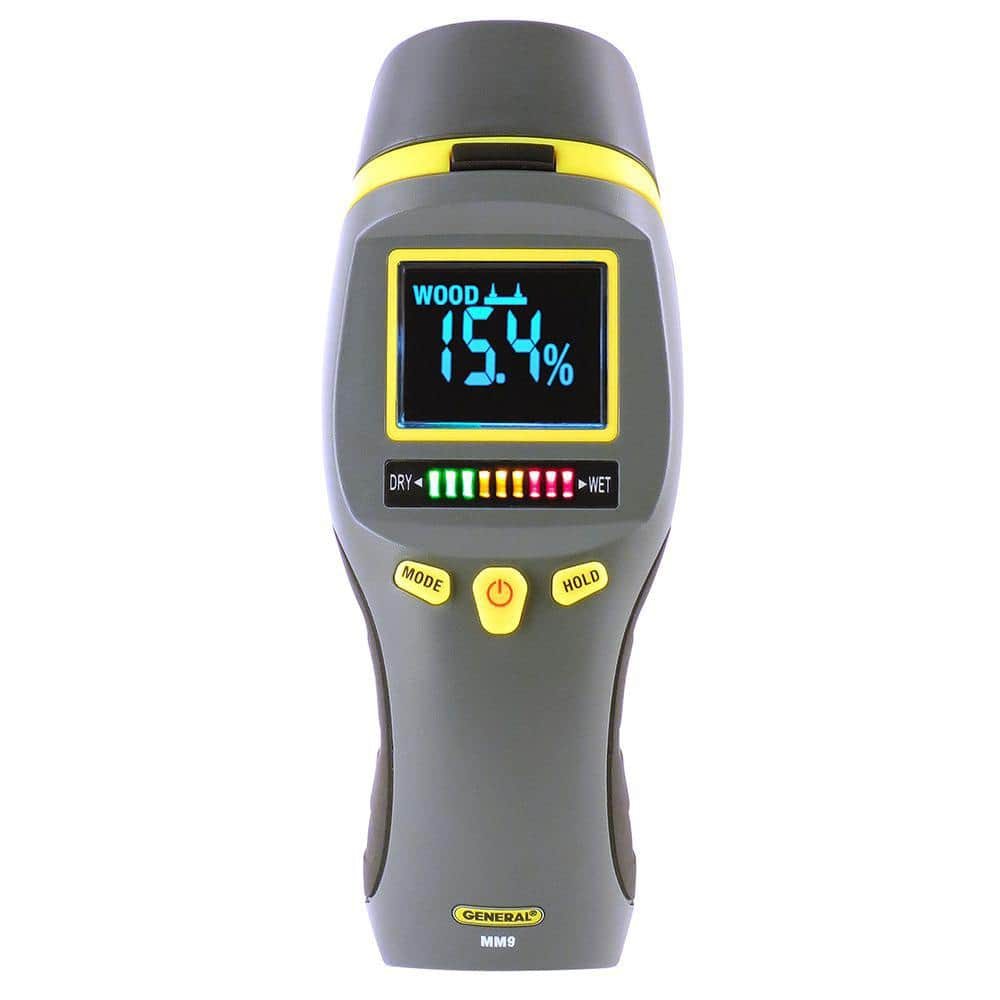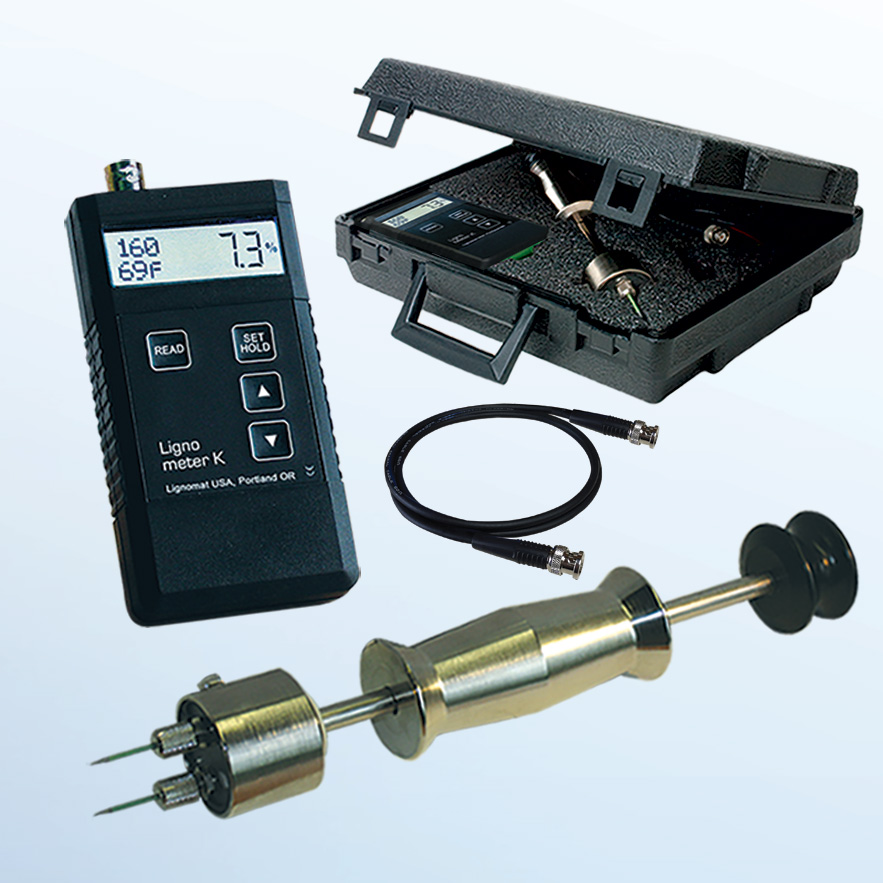Moisture Meter Reviews: Contrasting the Best Models for Professional and DIY Use
Moisture Meter Reviews: Contrasting the Best Models for Professional and DIY Use
Blog Article
Delve Into the World of Moisture Meters: Everything You Required to Know
In the realm of dampness meters exists a world of accuracy and functionality that frequently goes undetected. Comprehending how moisture meters run, the different kinds offered, and their varied uses can shed light on their value in guaranteeing quality and effectiveness.
How Dampness Meters Work
Dampness meters operate by gauging the electrical conductivity or capacitance of products to identify the dampness content existing - Moisture Meter. These meters are important devices across different industries, including woodworking, building, and farming. By using various methods such as pinless or pin-type technology, wetness meters give precise analyses that aid professionals make notified choices
Pin-type moisture meters function by inserting the sharp pins into the material being tested. On the other hand, pinless wetness meters utilize electromagnetic signals to check a bigger location without triggering any kind of damages to the product's surface area.
No matter the approach made use of, moisture meters play a critical duty in preventing problems such as mold growth, structural damages, or item problems triggered by excess wetness. Understanding how these meters work is crucial for guaranteeing the quality and stability of materials in various applications.
Kinds of Wetness Meters
Given the critical duty wetness meters play in numerous markets, it is important to recognize the different types offered to professionals for properly evaluating dampness levels. There are largely 2 major sorts of moisture meters: pinless and pin-type moisture meters.
Pin-type wetness meters utilize 2 pins that are inserted right into the product being checked to measure the electrical resistance in between them. This technique is commonly utilized for timber, drywall, and other structure materials. Pin-type meters supply precise analyses at specific depths, making them ideal for determining dampness gradients.
On the various other hand, pinless moisture meters make use of electromagnetic sensing unit plates to check a larger location of the material without triggering any damages. This kind is appropriate for promptly scanning large locations and is commonly utilized for floor covering, walls, and ceilings. Pinless meters are hassle-free for taking analyses on completed surfaces without leaving any type of visible marks.
Both sorts of dampness meters have their advantages and are picked based upon the details requirements of the task handy. Understanding the distinctions in between these kinds is vital for experts to make precise dampness assessments.
Applications Across Industries
With varied capabilities, moisture meters discover extensive application throughout various markets, helping specialists in ensuring optimal conditions for materials and structures. In the agriculture industry, moisture meters are vital for establishing the moisture content in grains, seeds, and hay, guaranteeing quality assurance and avoiding mold growth. Construction professionals depend on wetness meters to evaluate the moisture levels in building products like timber, drywall, and concrete, which is critical for keeping architectural integrity and preventing concerns like rot or mold and mildew. The floor covering sector makes use of dampness meters to gauge the wetness material in subfloors prior to setting up different flooring, avoiding check over here costly damages due to excess moisture. In the food industry, moisture meters are utilized to monitor and regulate moisture levels in items such as grains, nuts, and dried fruits to keep freshness and top quality. Furthermore, moisture meters play a crucial role in the reconstruction and damage analysis market by aiding experts identify and attend to water damages in buildings without delay. Across these varied industries, wetness meters are essential devices for ensuring the high quality, safety and security, and longevity of numerous materials and products.
Tips for Using Moisture Meters
Use the dampness meter's calibration setups to guarantee precise analyses when gauging the dampness content in different products. Calibration is essential for the appropriate functioning of a wetness meter. Before each use, it is recommended to inspect and change the calibration settings according to the particular material being evaluated. Additionally, ensure the meter is set to the correct moisture array for the product you are determining to acquire the most precise results.

When using a pin-type wetness meter, insert the pins to the appropriate depth recommended for the product being examined. This makes certain that the wetness readings are drawn from the correct depth within the material, giving a much more accurate depiction of its moisture web content. For pinless dampness meters, keep in mind to keep appropriate contact with the product's surface area to get trusted readings.

Routinely check and change the batteries in your moisture meter to protect against unreliable readings because of low power. Shop the meter in a safe and completely dry area when not in use to lengthen its life expectancy and keep its accuracy. By following these ideas, you can make the most of the efficiency of Click This Link your dampness meter and obtain exact moisture material dimensions throughout different materials.

Maintenance and Calibration
To make certain the accuracy of wetness material dimensions, normal maintenance and calibration of the wetness meter are vital actions in its correct performance. Calibration adjusts the moisture meter to guarantee that it supplies reputable and constant outcomes.
Calibration needs to be performed periodically, especially if the moisture meter is used often or in vital applications where specific dimensions are called for. Several dampness meters feature calibration devices or can be adjusted by specialist solutions - Moisture Meter. It is suggested to maintain a continue reading this log of calibration dates and results to track the performance of the moisture meter in time. By calibrating the moisture and keeping meter regularly, users can rely on the precision of the wetness material measurements obtained.
Verdict
Finally, wetness meters play a vital function in various sectors by precisely measuring the dampness material of materials. Recognizing exactly how these devices function, the different types readily available, and appropriate upkeep and calibration are essential for acquiring trustworthy results. Whether in farming, building, or manufacturing, the usage of wetness meters helps guarantee quality assurance and efficiency in procedures.
Building specialists depend on moisture meters to evaluate the wetness levels in structure materials like wood, concrete, and drywall, which is essential for preserving architectural integrity and stopping concerns like rot or mold. The floor covering sector utilizes wetness meters to gauge the dampness content in subfloors before setting up numerous flooring treatments, avoiding expensive problems due to excess dampness.Make use of the dampness meter's calibration settings to guarantee precise readings when determining the wetness material in different products. By adhering to these pointers, you can optimize the efficiency of your dampness meter and get precise moisture content dimensions across various products.
In verdict, dampness meters play a crucial role in various industries by accurately measuring the dampness web content of products.
Report this page